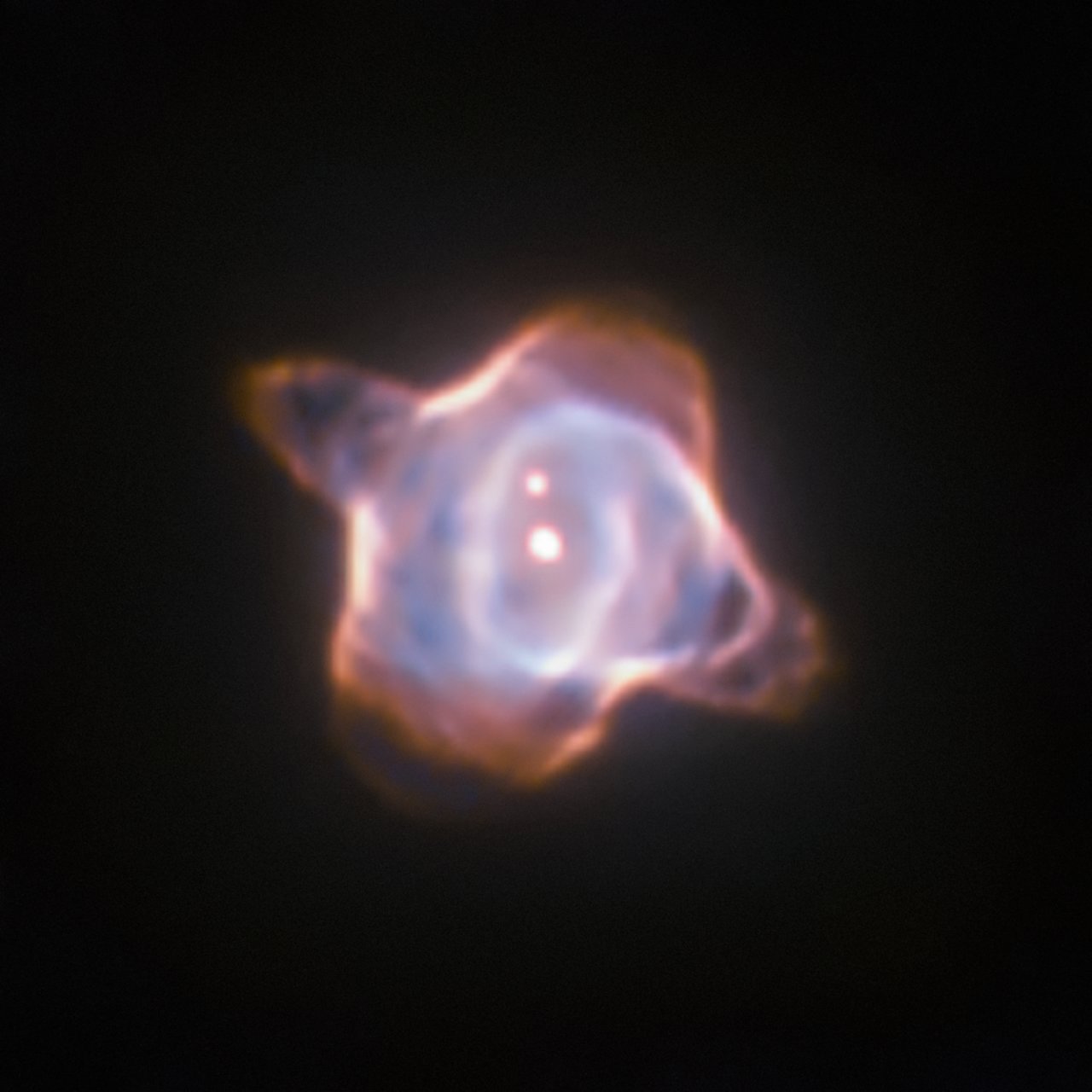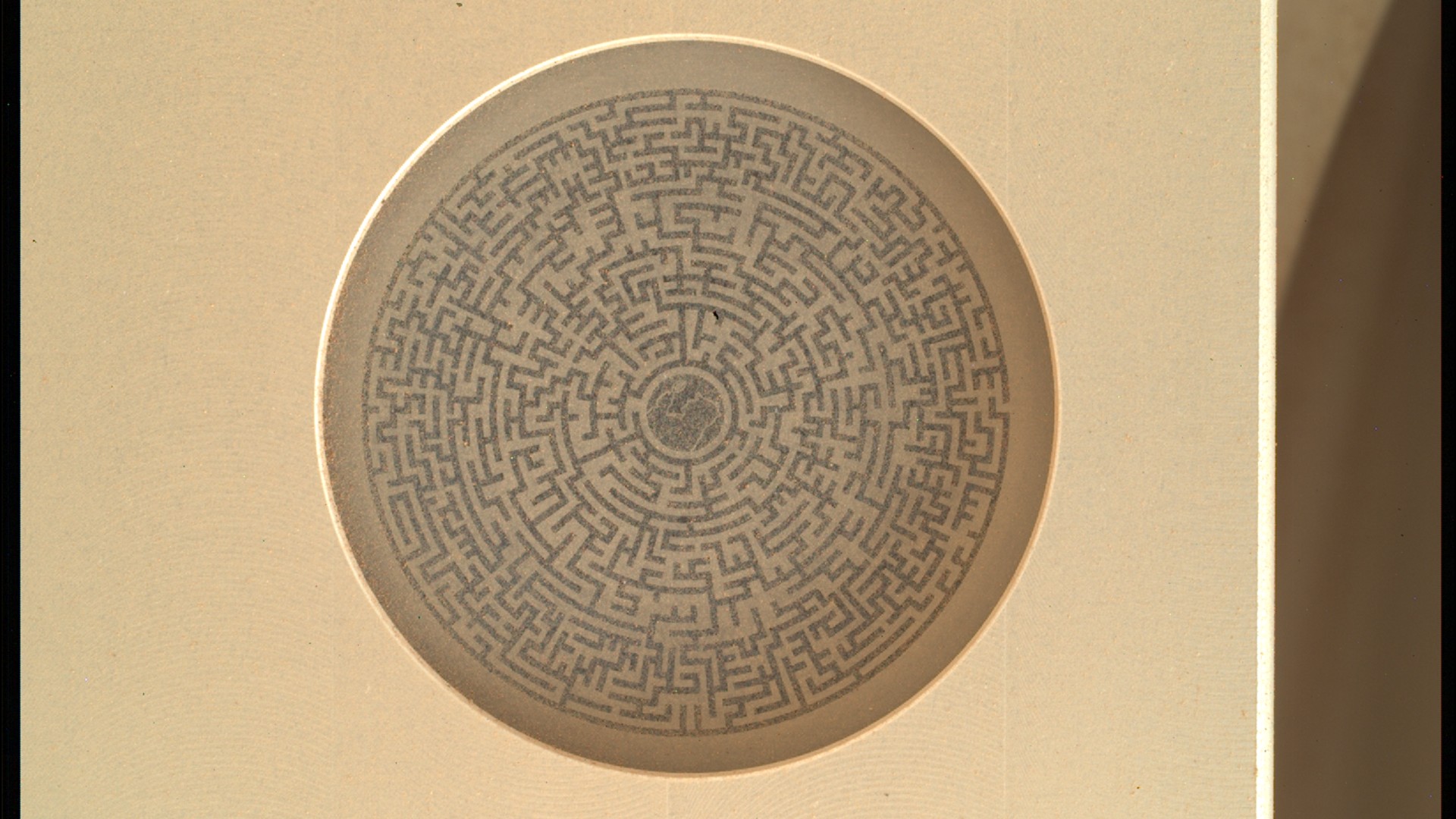Hubble Telescope Spies Strange 'Born-Again' Star After Epic Burn

A star's mysterious evolution recently came to light using the Hubble Space Telescope, which spotted the star cooling after a rapid temperature increase in the past. Th find is all the more extraordinary given that this sort of process usually exceeds a human lifetime, according to astronomers.
The researchers explained the process behind the rebirth of the star (called SAO 244567) in this new animation.
"SAO 244567 is one of the rare examples of a star that allows us to witness stellar evolution in real time," Nicole Reindl, a postdoctoral researcher from the University of Leicester in the U.K. who led the study, said in a statement. "Over only 20 years the star has doubled its temperature, and it was possible to watch the star ionizing its previously ejected envelope [of dust and gas], which is now known as the Stingray Nebula."
Astronomers have seen many changes in the star, which is 7,000 light-years from Earth, in the past 45 years. Between 1971 and 2002, they saw the surface temperature of the star increase by almost 72,000 degrees Fahrenheit (40,000 degrees Celsius). But the new observations with Hubble's cosmic origins spectrograph reveal that the star is cooling and expanding.
In 2014, Reindl's team proposed that SAO 244567 — whose low mass makes it hard to explain the rapid temperature fluctuations — may have just undergone a "helium-shell flash event," which happens when helium briefly ignites outside the heart, or core, of the star. Once the heating flash completes, SAO 244567 should regress in its evolution and cool. The new observations suggest this 2014 theory was correct, Reindl said in the same statement.
"The release of nuclear energy by the flash forces the already very compact star to expand back to giant dimensions — the born-again scenario," Reindl said.
Get the Space.com Newsletter
Breaking space news, the latest updates on rocket launches, skywatching events and more!
She added that the team will need to refine their calculations to better explain SAO 244567's behavior, which can't be accounted for in current models of star evolution.
Follow Elizabeth Howell @howellspace, or Space.com @Spacedotcom. We're also on Facebook and Google+. Original article on Space.com.
Join our Space Forums to keep talking space on the latest missions, night sky and more! And if you have a news tip, correction or comment, let us know at: community@space.com.

Elizabeth Howell (she/her), Ph.D., was a staff writer in the spaceflight channel between 2022 and 2024 specializing in Canadian space news. She was contributing writer for Space.com for 10 years from 2012 to 2024. Elizabeth's reporting includes multiple exclusives with the White House, leading world coverage about a lost-and-found space tomato on the International Space Station, witnessing five human spaceflight launches on two continents, flying parabolic, working inside a spacesuit, and participating in a simulated Mars mission. Her latest book, "Why Am I Taller?" (ECW Press, 2022) is co-written with astronaut Dave Williams.
